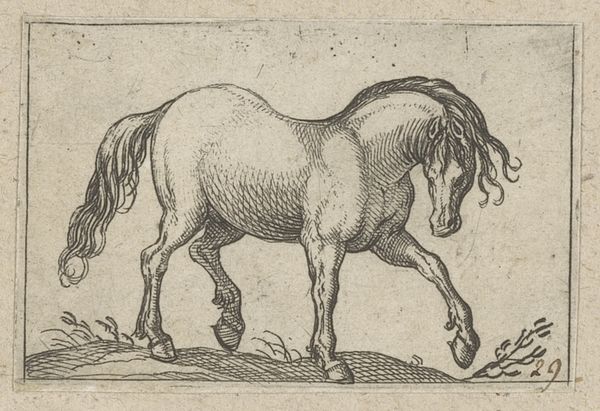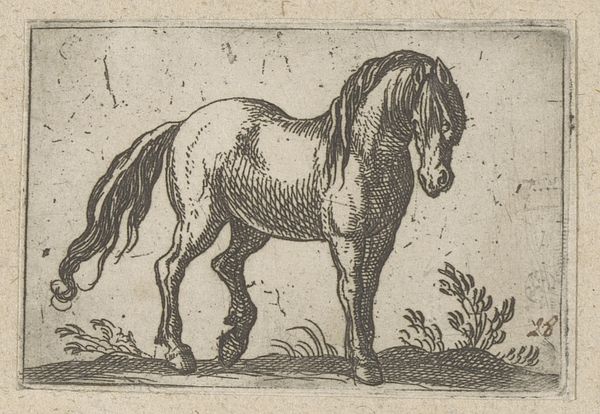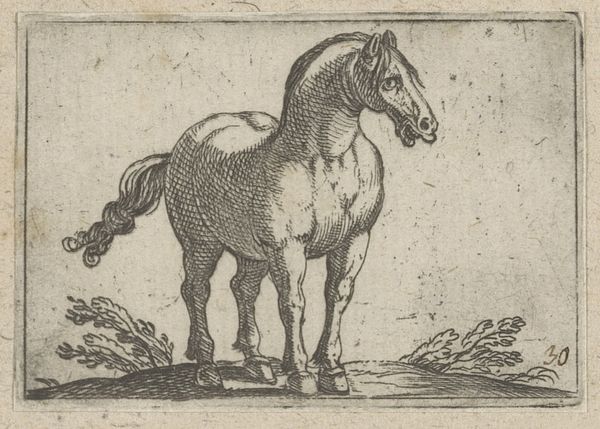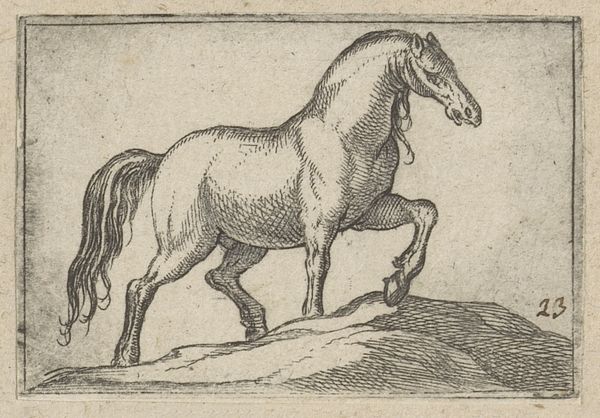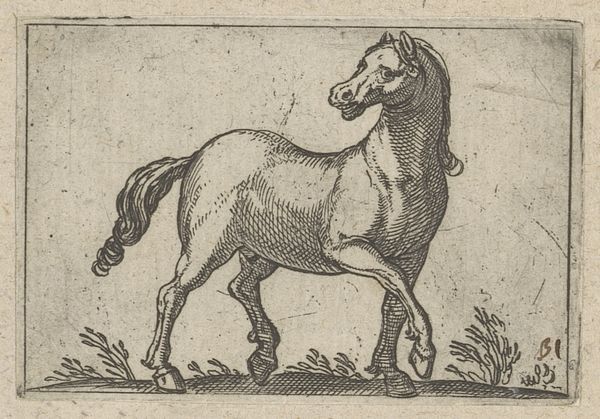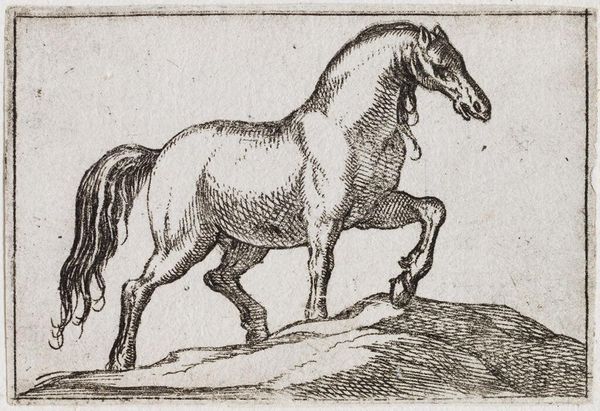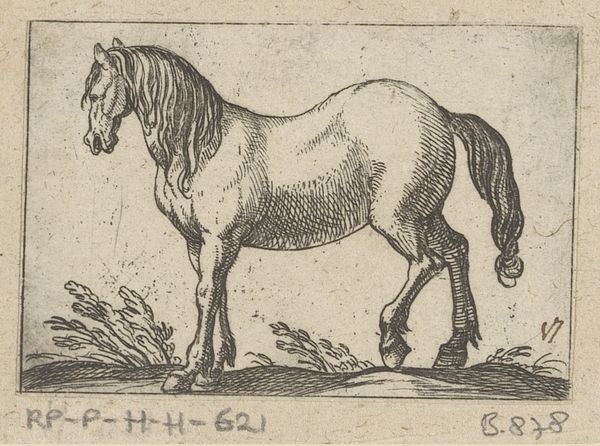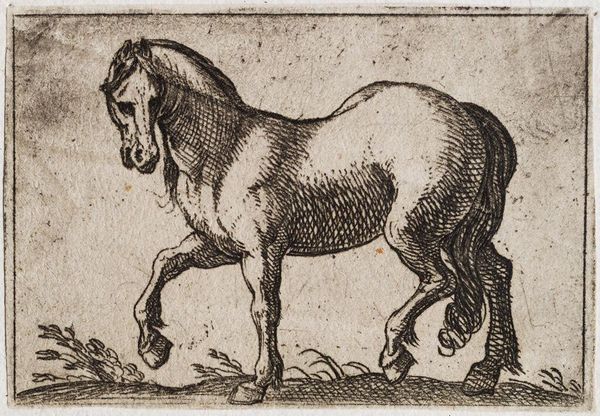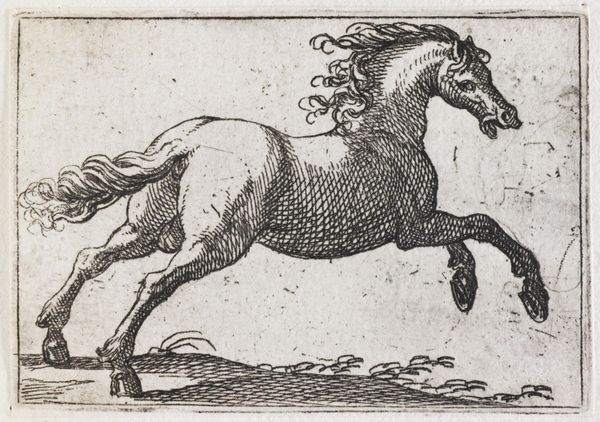
drawing, etching, paper, ink
#
portrait
#
drawing
#
baroque
#
etching
#
landscape
#
figuration
#
paper
#
ink
#
ancient-mediterranean
#
horse
#
realism
Dimensions: height 45 mm, width 66 mm
Copyright: Rijks Museum: Open Domain
This ‘Standing Horse, Seen from the Rear’ was made by Antonio Tempesta sometime before 1630, using the printmaking technique of etching. Etching, in Tempesta’s time, was becoming increasingly popular. It involves covering a metal plate with a waxy, acid-resistant layer, drawing through this layer to expose the metal, and then bathing the plate in acid. The acid bites into the exposed lines, creating grooves that hold ink. Because it relies on drawing, etching allowed for a freedom of line not possible in older printmaking techniques like engraving, which required more laborious cutting of the metal. This is clear to see in the dynamism and energy of the lines describing the horse’s musculature. Consider, then, that this small print is not just an image, but also an index of a specific type of labor. The etcher’s gestures, translated into ink on paper, make visible a whole world of craft knowledge and technical possibility.
Comments
No comments
Be the first to comment and join the conversation on the ultimate creative platform.
